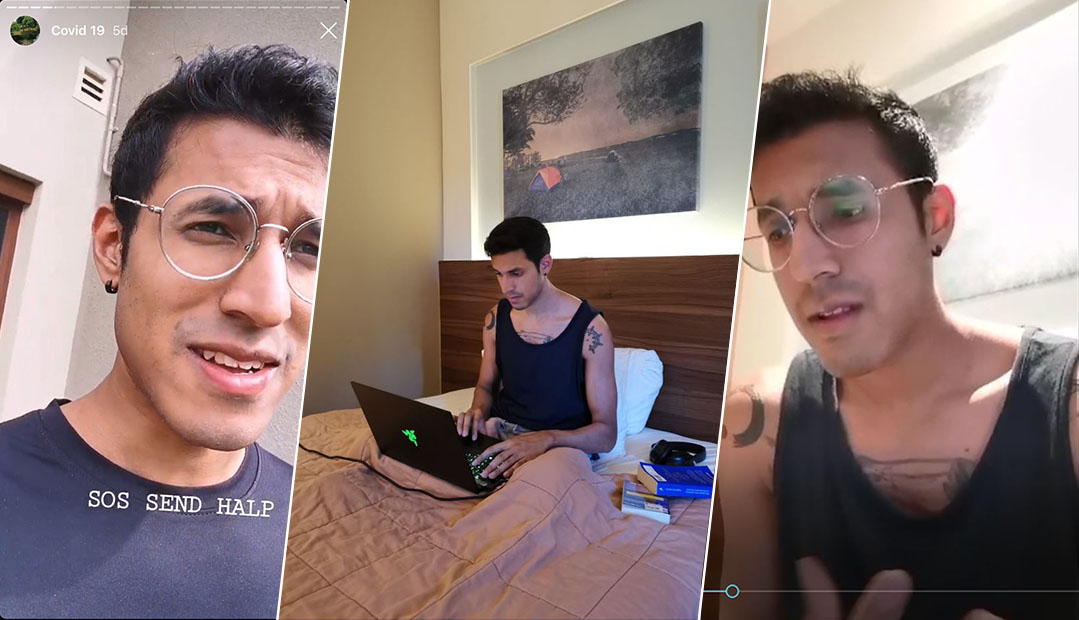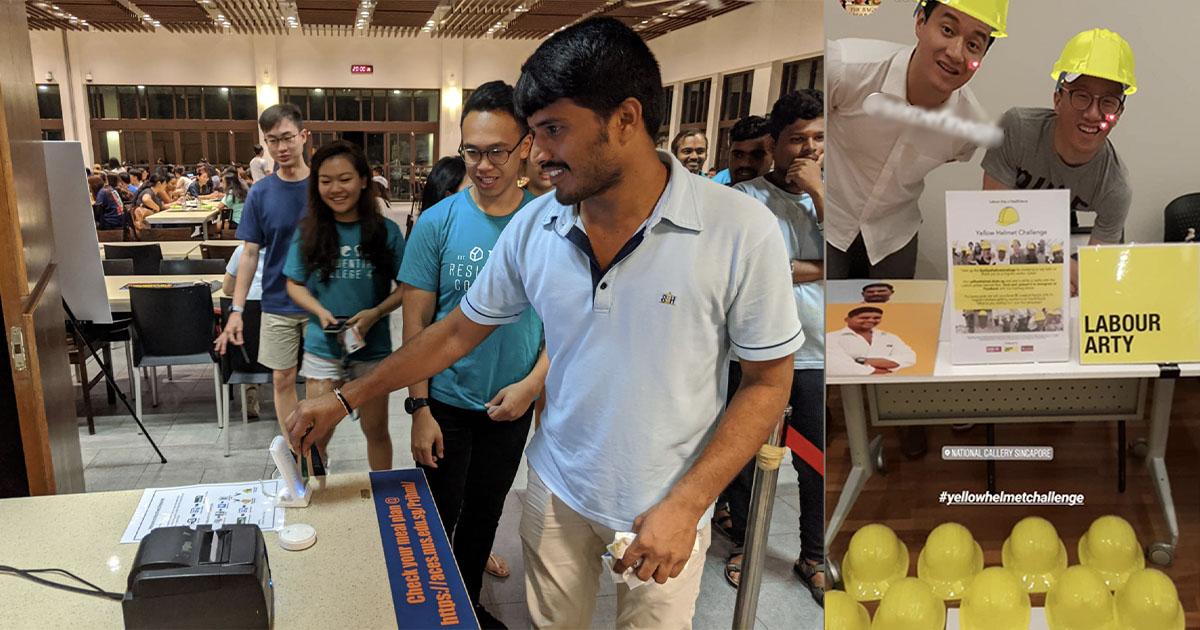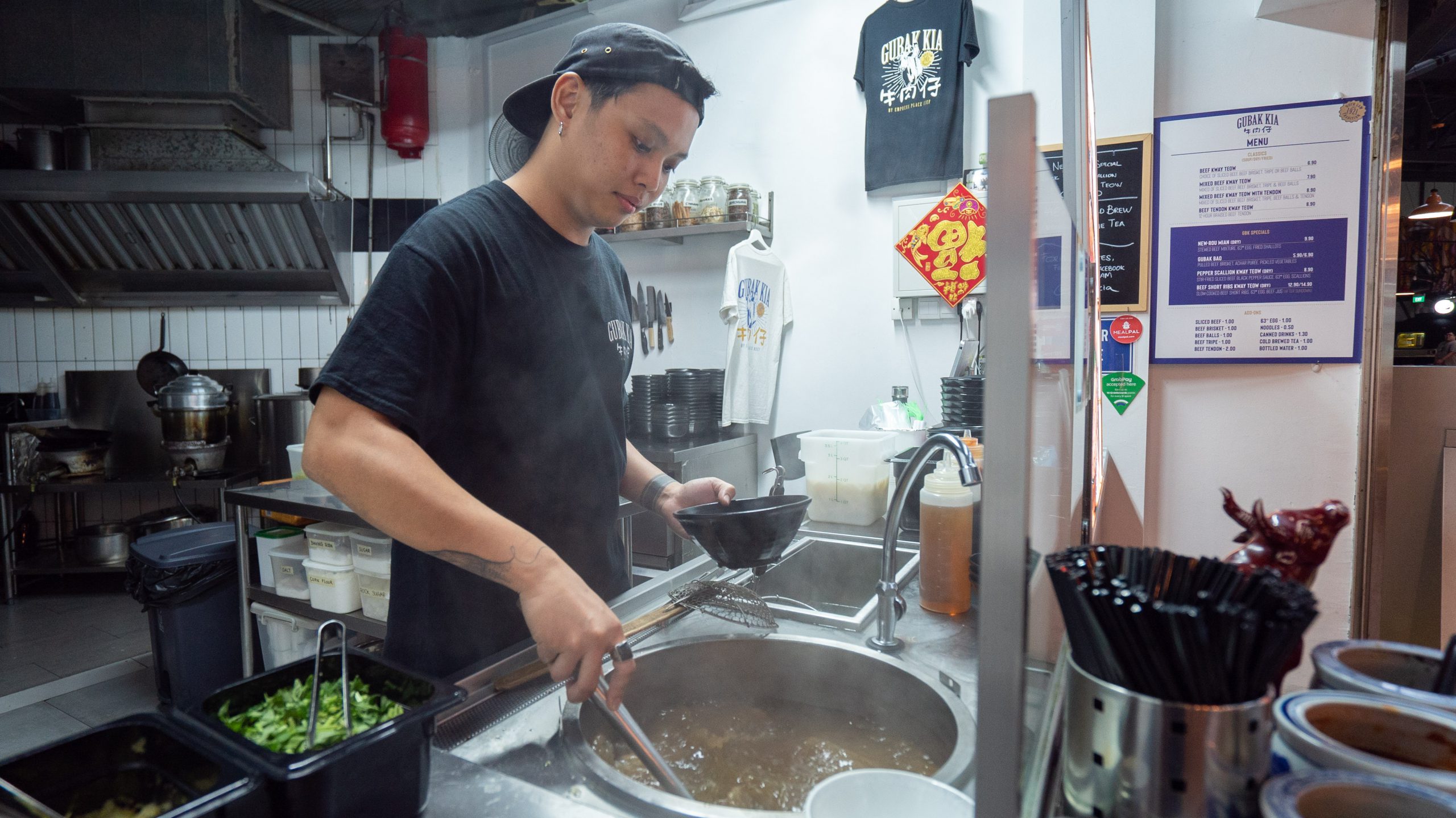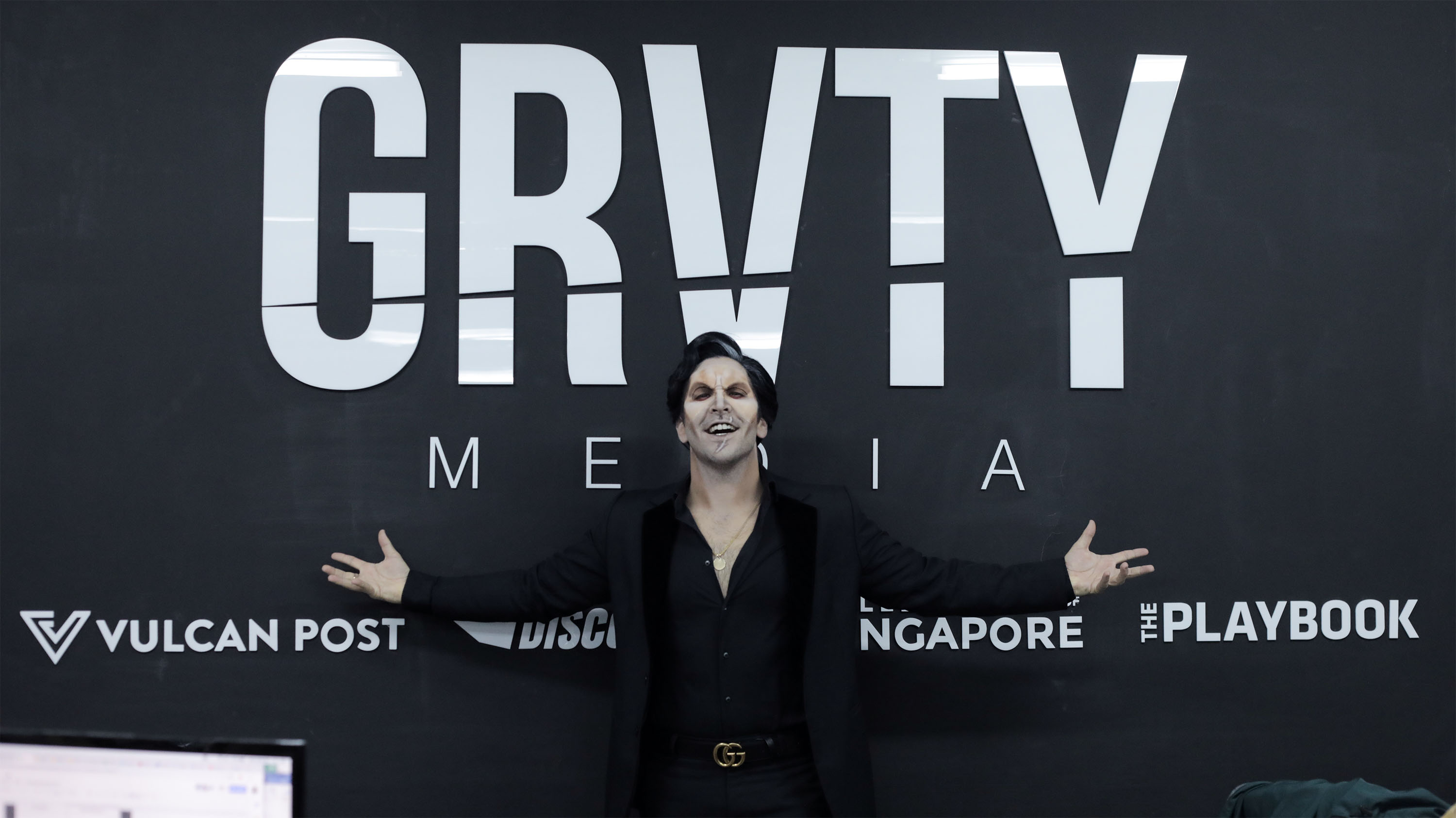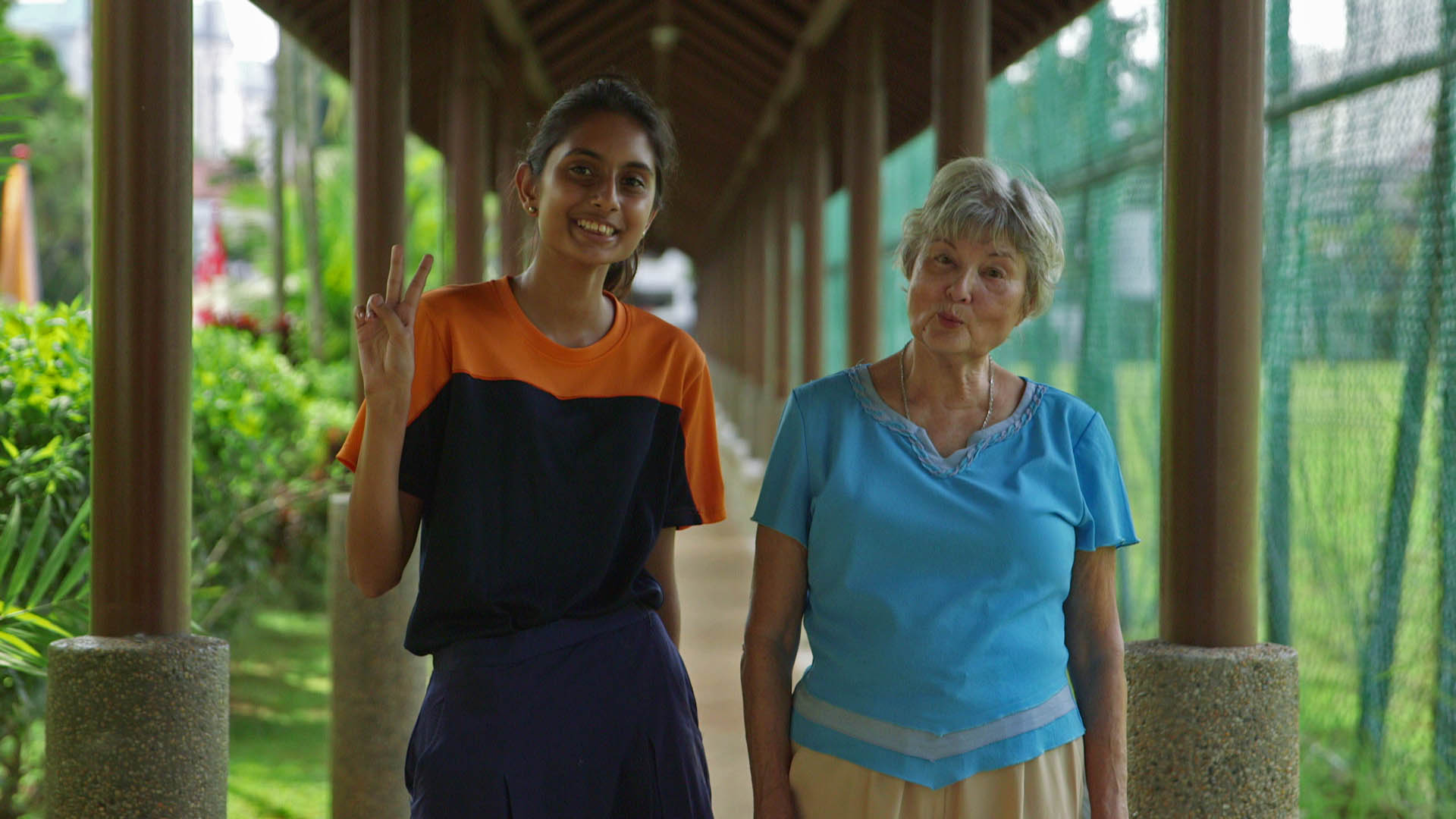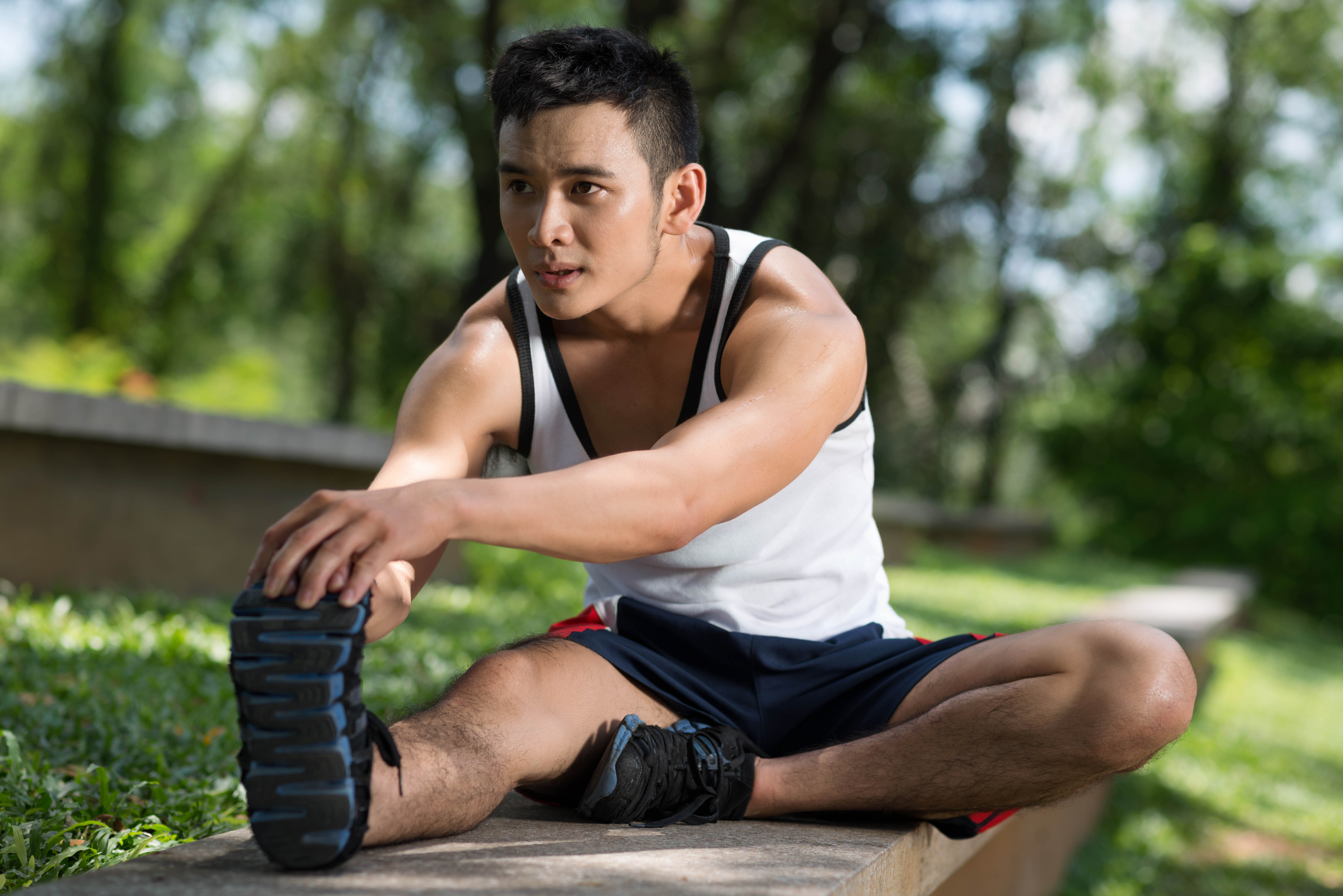Content creation is a difficult job to sell to a parent. Is it predictable? Nope. Does it provide a steady income? It depends. Does it require a whole lot of self-discipline? You bet.
Its vagueness doesn’t help either. Content creation could span across an array of roles from YouTube producer to Instagram photographer, or more recently, a camera-facing TikToker.
What does help, however, is that this new generation of content creators have an entire generation before it to thank for paving the way of what is possible and how it could be done, proving that it could in fact be a viable career.
JianHao Tan’s YouTube channel, for instance, recently surpassed four million subscribers, exceeding local mainstream media brands like Channel NewsAsia (1.03 million) and other regional favourites like Asia’s Got Talent (3.21m) and ONE Championship (2.36m). Night Owl Cinematics isn’t far behind with over a million subscribers of their own.
So, if you’re a budding content creator or aspiring to be one, is it worth the while to pursue it?
Only constant is change
As with every industry, change is the only constant, and content creation is no different.
As newer platforms emerge, new opportunities arise, allowing early adopters to build a presence without having to compete with established players on other channels.
When TikTok burst onto the scene, previously unheard-of names like Charli D’Amelio were able to amass a following - now over 85 million strong – despite only actively posting from late 2019.
In Singapore, the industry has also become a lot more respected and established than a decade ago. Besides JianHao Tan and Night Owl Cinematics, notable online media brands like SGAG and Rice Media have built companies around their successes in content creation.
Creators have also levelled up to improve on the quality of their content. YouTuber Jay Ng, most notable for his recurring role as Gong Gong on JianHao Tan’s channel and more recently as founder of up-and-coming tech channel PLUSSIXFIVE, noticed this shift in the last five years.
“Overall, I think the quality of production has changed a lot,” he said. “We see the pioneers change from shooting in bedrooms with little emphasis on production, to focusing more on the craft of cinematography.”
The barriers to entry are also much lower today than they were before. High production equipment like cameras and lights are more attainable than ever for amateur videographers and photographers, catering to a variety of skill levels.
“In terms of platforms, I think creating content is a lot more accessible now as there are so many platforms and apps to help you explore creatively to put content out there,” Jay added.
The Fight Between Numbers and Creativity
That increase in accessibility has its drawbacks, however. With the lower barriers to entry, the competition for attention is getting stiffer.
For industry veterans like Audrey Goh, who shot to fame on Wah!Banana before branching out on her own, there are also larger forces beyond a creator’s control that work against them.
“The oversaturation in the market is just a small problem,” Audrey explained. “The bigger problem is the algorithm. It's ever changing, and with every change it becomes less favourable for content creators.”
“Instagram's new algorithm makes it even harder for a creator's posts to achieve higher or even decent reach for their following, affecting their account growth,” Audrey furthered. “It’s not impossible to grow but it has become a lot harder, and as we all know, making a career out of this, is after all, a numbers game.”
According to YouTube, their algorithm is “a real-time feedback loop to cater to each viewer and their varying interests.” Essentially, by recommending videos that a viewer is likely to watch, he or she will stay on the platform longer (hence, more ad revenue).
While this may sound good for creators as a collective, it often puts individual creators on the backfoot when it comes to exploring or experimenting with new ideas and formats. As a rule of thumb, it’s an algorithm no-no to if new pieces of content lack the same reception as previous ones.
So if consistency in engagement and viewership is a key component to garner a good channel algorithm score, it’s no wonder why despite the criticisms of putting out overused and dated formats like “10 Types of People You Meet”, channels like JianHao Tan are incentivized to stick with what has worked before.
Is there still a place for creativity then?
Although established channels may be bound to formats they are known for, it’s also an opportunity for innovators in the space to differentiate themselves from the old guards.
And as for established names, a neat workaround has been to create subsidiary channels that allow them to explore new formats without affecting the algorithm score of their main channel. Night Owl Cinematics has Team NOC, for instance, while Wah!Banana has Wah!Banana Too.
This, of course, comes with its own set of dilemmas and issues. Starting a channel from scratch and garnering an audience for it is a daunting task, particularly after pouring sweat and tears into the main one. As a business, it also becomes increasingly difficult to prioritise resources and manpower to build a new channel that may not be monetizable for months or even years.
“It’s not impossible to grow but it has become a lot harder, and as we all know, making a career out of this, is after all, a numbers game.”
And as Audrey pointed out, making a career out of content creation is a numbers game. Not only are creators competing with one another for eyeballs, often they are competing for the same advertising dollars.
“Even though I’m someone who doesn't like to care about numbers, I am forced to and rightfully so,” Audrey added. “If an advertiser is paying me to promote something, I want to deliver results. That does add pressure into every posting (client or not), because ultimately, your account overall, will be affected by how your postings average out.”
So, if creators are at the mercy of platform algorithms to build their channels in order to generate ad revenue, are creators getting the short end of the stick?
Perhaps. After all, a creator doesn’t have ownership of their following, the platforms do, which places the power in the platforms’ hands rather than the creator. To circumvent that, Audrey believes that creators may one day return to owning their own platforms again.
“I think we might actually go full circle and head back to blogging,” she said. “The platforms are great, but as a creator, you are at the mercy of whatever algorithm is implemented.”
“You could be doing really well one day and with one app update, that can just change. I don't see it happening soon, but I predict a shift towards creators having their own websites again.”
“If you don’t capture their attention within the first five seconds, they’ll swipe away. That affects the angle and way you produce your content.”
Besides dealing with algorithms, staying relevant and up-to-date with the latest platforms can also be quite challenging.
Real Talk cast member Nicole Chang Min, who also produces videos on love and relationships on her own YouTube channel, attributes the dynamism of the industry to media consumers.
“Various platforms rise and fall throughout the years,” Nicole explained. “The main difference I’ve noticed is that people have much shorter attention span consuming media nowadays.”
“If you don’t capture their attention within the first five seconds, they’ll swipe away. That affects the angle and way you produce your content,” she furthered.
Consistency, collaborations and hard work
Despite the growing competition for attention, Nicole believes that working together rather than against other content creators will benefit the community on a whole.
“In my opinion, the ideal way to make creativity grow is through collaborations,” she said.
“Working together, growing ideas, helping each other out instead of trying to step on each other to scale higher.”
And with audiences spoiled for choice on content these days, Audrey’s advice is to focus on consistency.
As for Jay, success boils down to putting in the shift.
“I think it's a matter of how hard you are willing to work,” he said.
“Most people find it "hard" in the sense that they missed the wave, do not have the equipment, or that algorithms change too fast,” Jay added. “I think so long as you enjoy the process, you've "made it" and everything else will come as long as you continue to put in the work.”
=====
If you think you have what it takes, Sony is giving creative individuals a chance to showcase your creativity with the Alpha Creators Photography Contest.
As we transition into the new normal, how the story unfolds is in your hands. Get your cameras ready and tell your part of the story. Stand a chance to be one of four semi-finalists who will win S$1,000 in cash prize each and move on to the grand finals.
To participate, simply follow @SonySingapore on Instagram, set your account to public, upload your photo with a caption relevant to the theme, and lastly, remember to hashtag #SonyBeTheChange and tag @SonySingapore. Submit your entries before 11.59pm on September 20, 2020.
For more information, head over to the contest microsite.
//www.instagram.com/embed.jsView this post on InstagramA post shared by Sony Singapore (@sonysingapore) on Sep 1, 2020 at 11:59pm PDT
For the majority of us, the COVID-19 situation is a major inconvenience, largely because of the CB measures. However, considering the many uncertainties ahead, it is also important for us to pay a little more attention to our finances during this period.
For those whose income has been affected especially, it’s time to take a step back and look at ways to improve your finances. So here are some practical tips to help you get started amid the current global crisis.
1. Revisit Your Spending Habits & Emergency Reserves
Think of the CB as a pause button for you to revisit how you use your money. The best way to start is to list down all your estimated monthly expenses.
Look at how much you’re spending in categories like food, clothing, travel, entertainment, monthly subscriptions, loan repayments, or even the allowance you give your parents. And yes, while this may seem like what an insurance agent would tell you to do, it’s a handy way to break down your expenses and it gives you a better understanding of where you can cut back on.
At the same time, make sure that you have a ‘rainy day fund’ that you can access easily. Most financial planners would advise to have at least 6 to 12 months worth of your salary in your emergency fund. This is particularly apt in the current situation, as some of us may have lost our source of income because of COVID-19. Having this pool of funds ensures that we have enough money to survive through such situations.
2. Defer Your Debt Obligations
Once you’ve detailed your monthly expenditures, you will find yourself with several fixed expenses which may take a significant chunk off of your income. These include any loans and insurance policies you may have.
To help free up your cash flow, the Monetary Authority of Singapore (MAS) has launched measures that allows you to defer debt obligations. You can apply to defer premium payments on your life and health insurance for up to six months. If you are paying off your housing loans, you can also apply to defer your mortgage loans until the end of the year.
Many banks have also rolled out initiatives to further help their customers tide through this challenging period. For example, CIMB Singapore is offering deferments on its renovation and education loans, and OCBC is automatically reducing the minimum payments for its credit card to 1% of their statement balance.
If you are still struggling to juggle your daily expenses, find out if you qualify for any government relief and assistance here.
You may also want to consider a personal loan just to tide you through this period. There are several options available in the market, each with its range of benefits. For example, Standard Chartered offers a CashOne Personal Loan starting from an interest rate of 3.88% (EIR 7.67% p.a), and you also get a 50% off your first month’s instalment amount. (Terms and conditions apply.)
3. Protect Yourself And Know The Perks You’re Eligible For
Besides keeping tabs on your spending, review your health and medical policies. This is prime time to ensure that you are sufficiently protected as you wouldn’t want your savings wiped out from a medical bill.
Know what you are covered for. This includes the extended protection you may be getting from your insurers. Many insurance providers and banks are offering complimentary protection plans for their customers. Be aware of these benefits as it will be a tremendous help should you contract the virus.
SingSaver has very succinctly compiled the list of extended and complimentary coverage from all the insurance companies in Singapore, which you can find here.
4. Minimise your spending
This CB period is the best time for accumulating your savings. Staying home would mean that you are already going to be saving the money you would have spent on travel or night outs.
Many brands are also running attractive discounts and promotions, but remember to spend wisely. Do you really need a new pair of sneakers during this #StayHome period or do you need groceries?
Chances are, food is the main aspect that you will be spending on this period, followed by other household necessities like toilet paper. All the supermarket chains in Singapore and smaller online grocers offer free delivery with a minimum order.
There’s even a comparison of the different online grocers available in Singapore, which will satisfy the Singaporean in you to find the ‘cheapest and good-est’ deals for your necessities.
Take this chance to bank on the best deals, bulk order your groceries online and have them delivered for free, and start saving on food by prepping your own meals.
Here is a list of over 30 budget-friendly meal prep recipes you can get started on.
Alternatively, if you need to order food, you can find a list of ongoing food delivery promos here!
5. Take advantage of free online classes
Being forced to stay home frees up extra pockets of time, which is a golden opportunity to pursue all those things you have been wanting to do but could never find the time to.
Work on your fitness goals: Gyms are closed and fitness classes are all halted, but there is now an influx of online fitness classes which you can follow at home. This also means that you can save on gym membership or the usual paid fitness classes.
For example, Nike and Adidas have launched free fitness videos which you can follow at home. Gyms like Evolve MMA have also been holding live classes on their Facebook and Youtube channel.
Image: Adidas website
Here’s more online exercise classes you can try!
Or perhaps you have always wanted to learn Korean, or improve on your photography skills, there’s no better time to pursue all those goals.
Pick up a new language with Duolingo, or take advantage of free online courses to learn a new skill. If you haven’t got around to using your SkillsFuture credits (which is $500 sitting there, waiting for you), take this chance to sign up for a course here.
6. #StayHome Entertainment That Doesn’t Cost A Buck
Being at home 24/7 can get really stifling and dreary, but as with free online classes, there are many ways to keep yourself entertained (and sane).
Stay connected with your friends and family with Zoom, or play games together with social apps like Houseparty and Psych!. You can even get the KTV experience with this Chinese karaoke app, <a href=" Party.
For existing Netflix subscribers, there’s a Netflix Party Chrome extension that allows you to watch Netflix remotely with friends. The tool synchronises video playback and there’s even a chat bar for you to chat as you watch!
You can even <a href=" the Great Barrier Reef with David Attenborough if you want. There’s really an abundance of entertainment resources available online, and the best part is, all of these are completely free.
For Those Who Need More Financial Help
To help those who may need immediate help with their cash flow, SingSaver is also running an exclusive promotion with Standard Chartered regarding their CashOne Personal Loan. Each approved applicant will stand a chance to win a #cashcushion of up to S$10,000!
Simply apply for the Standard Chartered CashOne Personal Loan for a chance to win the cash cushion. The campaign runs from 6 Apr till 30 Jun and 3 winners will be picked every month.
Find out more about how you can win yourself a #cashcushion here!
(This article was written in collaboration with SingSaver.)
(Header Image Credit: Sam Dan Truong on Unsplash)
I am patient #347.
This is my story and how I would like to rally all young Singaporeans to take this pandemic situation seriously. Stay home and we will all tide this over together.
It’s been a month since I got tested positive. I’ve been warded at the hospital, taken a lot of different medications, shifted to an isolation facility, and done everything I can to keep myself healthy, but I still have the virus.
Being isolated and away from your loved ones for so long really gets to you, and every day, the only thing I can hope for is the day I get two negatives.
In order to be considered fully recovered and discharged, you have to be tested negative twice in a row, but I have never come close to that. After a while, this cycle of hoping for that and then being disappointed by the results takes a mental toll on you. What’s even scarier when you are a Covid-19 patient is that there is no cure for Covid-19. There’s nothing else you can do but hope your body is strong enough to fight the virus.
How It All Started
On 18th March, I came back from the UK with a sore throat, but it didn’t feel like just a normal kind of sore throat. I knew something wasn’t right so after a quick shower, I went straight to the hospital to get tested.
Everything was very organised there: I filled out forms, waited in a tent, did a chest X-ray and a nose swab test. The whole process took about three hours and by the time I got home, it was almost midnight. My throat was still sore, my bones were aching, I felt a fever coming, and I was just feeling generally very unwell.
By the time I woke up the next day, I got the call: I have Covid-19.
At that point, I remember thinking about how unreal it was because I never thought I would get the virus. And being told that you have it was like a harsh wake-up call.
It was then that I thought, “okay, this shit is real.”
What It Was Like As A Covid-19 Patient
Everything happened really quickly. I was first isolated in a single ward room at Khoo Teck Puat Hospital (KTPH). That first night there was horrible. I still felt really sick. I had a fever and my backbone was so painful that I had to numb it with panadol pills.
At the same time, I was really worried that I might have passed the virus on to my family, my colleagues, and my girlfriend–the people I had been in contact with for the past two weeks. I texted all of them and advised them to get tested as well.
Surprisingly, I woke up the next day feeling like I’ve fully recovered. My sore throat, runny nose, and fever were gone, but it wasn’t safe for me to be discharged yet. The doctor came and shared about how because there's no cure for this virus, they could only prescribe medicine like malaria medicine to boost our immune system for our body to fight the virus.
Thankfully, I’ve been in a stable condition since then. I was transferred to a shared ward on the third day, where I spent a week at before being transferred to an isolation facility at D’Resort, where I am at now.
The Pains Of Having The Virus
I’m lucky to have only had very mild symptoms, save for the bad pain in my backbone, but the emotional and mental pain, and the homesickness is very real.
Being taken away from your family so suddenly and not knowing when you can see them again gets to you. And when you are in a shared ward where people around you are all sick, coughing, and puking, it makes it hard for you to stay positive as a Covid-19 patient. I didn't have any motivation to do anything.
“I wasn’t in a right state of mind there at all.”
The doctors and nurses gave us utmost care, but in that environment where you don’t get sunlight and fresh air, it can get really stifling. All of us in that ward were just there, waiting for time to pass, waiting to be tested, and waiting for the day we can get out. It was very, very depressing.
Every day, I was just hoping to get a negative. I had that thing up my nose more than six times in the hospital and I tested positive for every single one. And the funny thing about this virus is that the other patients in my ward who were vomiting and showing more symptoms than I had got tested negative first before me.
Long And Dreadful Journey To Full Recovery
I'm doing a lot better now. Here at the isolation facility at D'Resort NTUC in Pasir Ris, I have my laptop, my own personal space and toilet, and a view of the beach and the park. I have a roommate around my age as well, so it feels just Iike NS.
Time actually passes fast here but you do lose track of the days here. I’m lucky to have very supportive family, friends, and a girlfriend who have kept me sane through messages, video calls, and care packages.
I've been trying to be healthier as well, eating more vegetables, working out a lot, and taking a lot of vitamin pills that my mum has been sending me. I've been drinking a lot of water, drinking a lot of green tea, and pretty much doing everything I can with the hope that it can flush out the virus. Nothing seems to work so far.
All of us here are just hoping to get that two negatives, and it gets mentally draining and depressing when you get tested positive again and again.
I just want to go home.
With that said, I’m very grateful for the quality of care I’ve been receiving right from the start. All the healthcare workers at KTPH who have made my recovery process a lot easier, keeping me calm and always checking in on me to make sure I am fine mentally. The professionalism, attentiveness, and warmth have given me a lot of comfort and the confidence that I was in safe hands, and the human contact and affection that they gave is just top-notch.
A Covid-19 Patient’s Appeal To Youths: Please Abide By The Rules
Compared to other countries, our country is doing such a great job at making sure that we are being cared for.
There may be a few Singaporeans breaking the Circuit Breaker measures, but I'm very happy to see that the majority of youths are actually abiding by them. And it’s heartening to know that in a recent poll, the National Youth Council found that over 70% of youths want to do their part to stop the spread of Covid-19.
Personally, I’ve seen how a lot of young Singaporeans are finding little ways to help make this Stay Home period a little better for friends and family, be it through ‘Zoom parties’ or sharing content to help each other cope with cabin fever. We can also do more to help educate those who may not be as aware of the severity of the situation.
This virus is not something that should be taken lightly. Europe and America are in disaster but we are not in that state of panic because we are lucky to have a government that had plans in place to handle the situation. Which is why I sincerely hope that Singaporeans will continue to do their part as well. We should continue to care for one another during these challenging times and not perpetuate any racist or xenophobic sentiments.
Please don't break the Circuit Breaker measures. I overlooked some of the measures and I got the virus, and still have it. This is so important because you never know if or when you are going to get it.
Majority of people who have it don’t even show any symptoms. I haven’t shown symptoms for a while now and I’m still being tested positive, so the only way to not get this virus is to practice safe distancing, wear your mask, stay home, and abide by the measures. As a young Singaporean, I can understand the inconvenience, but as someone who has the virus, I’d do anything to be healthy now. The quicker we follow the rules, the quicker we'll go back to normal.
This story is written by Millennials of Singapore, as told to us by the featured individual. The individual has since been discharged on 22nd April.
-
Stay Home and be #SGUnited
"Prove to the others out there that Youth can do this, and do it well too. Show them that despite your years, you are tenacious and determined. There will be a few bad hats here and there, but we know from our polls that the majority of youth want to do the right thing and be counted in a time of crisis like we have never faced before. So stay home, stay safe and make us proud!"
- National Youth Council Chief David Chua
Looking to try something new during this circuit breaker period?
You’re not alone! Visit MehGoWhere.sg, an interactive site that's been created to help keep you entertained during the Covid-19 period!
Get all the latest info and resources while having fun at the same time! It’s impossible to be bored with engaging videos and stories as you #StayHomeForSG with MehGoWhere <a href="
(This article was written in collaboration with the National Youth Council.)
‘Made in China’, but Singaporean.
For 30-year-old Ou Ningfei, who migrated to Singapore with his family when he was 7, this puts him in a spot where he was, in a way, stuck between two cultures.
Being a foreigner meant being an ‘outsider’ in a land foreign to him, and some of the things he experienced back then include being treated with prejudice, or “they would start to interact with you lesser because they see that you’re from another place.”
Such ostracising and marginalising behaviours towards migrants are ubiquitous, but it is also exactly that that often makes our society forget empathy.
Fortunately, those experiences only pushed Ningfei to pick up on the nuances of the local culture more quickly. And today, his identity as Singaporean is no less than any other born-and-bred locals, for he has spent almost this entire life here and also fulfilled the service of every Singaporean son.
However, for many other immigrants who come to Singapore in search for better livelihoods, the privilege of being accepted by society may not exist.
Marginalisation in the Migrant Worker Space
Besides personal experiences, Ningfei also had his share of interaction with migrants and the hardship that they face. His parents were migrant workers themselves and his mother, a regular volunteer at church events that support migrant workers.
“I’ve seen the spaces that [migrant workers] occupy, the issues that they face, physically and socially. And many times, they get exploited in so many ways.”
Migrant workers lack privilege and power of influence in a foreign society, making them more susceptible to being taken advantage of by errant employers.
“There are so many stories that are so hard to hear, so painful,” Ningfei added, as he shared about migrant workers who end up with injuries or even permanent impairment caused by their work, as well as the exorbitant agent fees and low salaries.
In an interview with another publication, Ningfei shared that some workers pay “as much as $3,000 SGD to $15,000 SGD to their agents in home countries like India and Bangladesh.”
Once, at a gathering he and his mother were helping out at, Ningfei met a Chinese migrant worker who was forced to do OT for 2 weeks straight without remuneration. Seeing that the worker had come at almost 10pm to collect the packet of Cai Png for dinner, Ningfei spoke to him to understand why.
Describing the grease, grime, and blisters that marked the worker’s arms and hands, Ningfei recalled, “You can tell how hungry and tired he was. He was crying and telling me how he hasn’t gone home for a long time. And I realised how even though we were around the same age, we lead such different lives.”
“You look at people like him, and you know that there’s really a lot of things you can do for the underprivileged.”
Labouring for Migrant Workers
After having helped out at many welfare support events for migrant workers together with his mother, Ningfei decided to do more on his own.
In 2018, he started Labour Arty, a ground-up initiative that leverages various mediums like photography and digital media to promote appreciation and awareness for migrant workers in Singapore.
“The genesis of this is that I’m Singaporean but I’m from China. My parents are migrants themselves, which is why my heart goes to migrant workers.”
With the support of friends, Labour Arty shot and launched their first project: A humble photography exhibition titled Blind Spots. It captured a sight familiar to all of us but often go unnoticed.
Migrant workers being transported at the back of lorries like ‘human cargo’.
Since then, Labour Arty have gone on to launch several projects. These include the Tap4You project, which encouraged NUS students to share a meal with migrant workers, as well as the Yellow Helmet Challenge, one of their earlier works, which aimed at increasing the visibility of and appreciation for migrant workers.
Just recently over Chinese New Year, they also partnered with sponsors like Impossible Foods and Dumpling Darlings to organise a Dumpling Party for migrant workers who were affected by the travel restrictions arising from the COVID-19 situation.
Besides championing for the migrant workers, Labour Arty’s work is also a subtle approach at increasing social harmony in a community. This is especially important in Singapore, as our society is such a diverse conglomeration of different nationalities, races, and cultures.
“We try to change the perspectives people have of migrant workers. By increasing awareness amongst those who aren’t aware, and by making those who are aware be more ready to stand up, so that [migrant workers] don’t get exploited.”
Running An Initiative As An Individual
However, juggling full-time work and personal commitments on top of running a ground-up initiative comes with its share of challenges of course. For example, the lack of resources to do more.
Although Labour Arty has been fortunate to receive support from various parties and organisations including the National Volunteer and Philanthropy Centre, it is fully run by Ningfei and a team of like-minded friends on a volunteer-basis.
A full-time product and process manager himself, Ningfei explains the constraints they face in championing for change.
“It’s fun for friends to help out for one or two projects, but it’s tough to sustain an entire movement.”
However, the mission has always been very clear to him: Every little bit helps.
Citing several similar movements and initiatives like Migrant x Me and Sama Sama, he spoke about the inspiration he draws from them, as well as the sense of camaraderie in working towards a common cause.
He also emphasised the importance of collaboration and finding the right partners in achieving the mission, “good partners can give you support and help you spread the work you do.”
Do Something Close To Your Heart
Besides Labour Arty, Ningfei also co-founded another groundup last year. Aptly named codeToLove, the initiative helps other non-profits with their IT needs.
In some ways, codeToLove is also a passion project and one that allows him to help amplify the good that others do while practicing what he likes (designing and writing digital/UX content).
“If I am to be labouring, it better be for good, and to have some fun out of it,” he explains.
“If it’s purely meaningful but not fun, it’s going to be miserable. But if it’s fun but not meaningful, then it’s not going to mean much at the end of the day.”
And yes, at the end of the day, Ningfei’s motivation is something that many of us can relate to, which is a desire to derive meaning and enjoyment out of what we do. It can come from your job, or it can come from starting your own groundup, but what he said will ring in our ears for a long time to come: “Do something that’s close to your heart.
–
Start Your Own Groundup With Groundup Central!
Passionate about a social issue and wish to make a change, or keen to contribute towards a certain cause? Check out how you can get support from Groundup Central here!
(This article was written in collaboration with the National Volunteer & Philanthropy Centre.)
(All images credit: Ou Ningfei and Labour Arty)
Growing up, John Paul’s family was unlike most of ours. Their family dinners were at the coffee shop tables where his dad peddled their famous beef noodles, and John pretty much grew up there.
“I was that small boy at Siglap who carried like three, four bowls of hot soup all at once.”
At 11 years old, John was already known by regulars as “Gubak Kia” (Hokkien for “beef boy”), an endearing nickname for the son of ‘Gubak’, which is what they called John’s dad.
It was a name that John hated, but grew to embrace as he continued helping out at his father’s stall. In fact, this name now brands the hawker stall John runs at Timbre+, where he sells the same traditional bowls of Empress Place Teochew Beef Kway Teow along with his modern creations.
The Cooking Life Chose Him
Now 25, John is a full-time hawker. But this was not exactly his plan at the start.
As someone who always wanted to be out-and-about, John had lofty dreams of making a living off travel photography and writing. This led him to pursue a Mass Communication course in Kaplan.
However, the more he helped at his dad’s stall, the more he felt pulled into the trade. He began observing the way his dad prepared orders, noting details like how long his dad would cook the kuay teow for or how to portion the meat.
His first attempts at cooking came about when his dad left him alone at the stall.
“I started making my own bowls of noodles when my dad went on breaks. Then, my dad would tell me what I did right or wrong when he came back.”
With time and practice, John developed a better understanding of cooking, and this sparked his deeper interest in the culinary world.
Scouted By The Boss Of A Gourmet Burger Joint
John’s ‘big break’ came when the boss of Wolf Burgers saw his resume on a job portal. In disbelief that a 19-year-old kid could have nine years of hawker experience, he paid a visit to the stall covertly.
“He came with his wife, ordered a bowl, sat outside and watched me,” John recalled.
That day, John was offered a job in the Wolf Burgers kitchen. It was a golden opportunity, but John hesitated.
“I was really scared that I would mess up, because I had never worked in a professional kitchen or had any proper training,”
He gave it a shot in the end, and it was also through this stint that John realised his true passion in cooking. He went on to work at Camp Kilo and Kilo Lounge, where he was trained in more diverse types of cooking and cuisines.
Then, his dad got into an incident.
“I saw how bad my dad’s hand injury was. I also saw that he was getting older, and I knew I had to do something.”
Retaining And Recreating Traditions
Coming full circle, John brought years of culinary expertise in different kitchens and cuisines back to the beef noodle stall.
He started experimenting with the various ingredients he could find around the stall during lull periods.
As luck would have it, he met an old friend, Lincoln, who saw the potential in the beef noodles and John’s desire to build the brand. The duo drew up business plans and sought investors, but “who in the world would entrust such a big amount of money to two 24-year-olds to run a shop?”
Instead of giving up, the pair took the leap themselves. Lincoln forked out the capital and with some help from John’s former boss, their stall Gubak Kia came to fruition in May 2019.
In a way, Gubak Kia is John’s homage to his family legacy, which traces back to his great-grandfather’s time at Hock Lam street in 1921. Despite this history, John’s dad never asked for John or his siblings to take over. But for John, he naturally saw it as his duty to preserve their name.
“If it stops at my dad, I don’t know if I can live with that.”
“I love the food,” he explained, “and if I don’t cook it, I won’t get to eat it ever again.”
Carving His Path As A 4th-Gen Hawker
Starting Gubak Kia is also John’s way of showing appreciation to his dad.
“My dad toiled so hard to build this name up, and I don’t want to see it go to waste.”
While John retains most of the foundations of his dad’s dishes, he also creates modern twists to these traditional dishes, like introducing Beef Short Ribs to their classic bowls of Beef Kway Teow, and Gubak Bao.
No doubt, being a young hawker has its challenges. Whether it’s the worry of an inconsistent cash flow or the physical strain of working in a hawker kitchen, these are all part of pursuing a business venture or an unconventional career. But for John, the food always comes first.
“I don't really care about the money part as much, I just hope that we can make rent. The only important thing is that people are happy with the food, and they know about my father, about Empress Place.”
“It’s tiring but fun,” John mused. After all, the kitchen is where he comes alive. The best part of it all is that he toils, knowing that people will get to eat what he loves.
Reflecting on his journey, John talked about many fears he had, but his persistence and determination paid off.
“If you know you’re working towards something and you are humble about it, there will always be a way to make it work.”
-
Always Had A Passion You Wanted To Pursue?
Like Gubak Kia and many others, we all have dreams we wished we were brave enough to pursue.
Check out a series of workshops done in collaboration with Spark The Next here for more inspirational passion stories, and how you can chart your own path to success!
(This article was written in collaboration with Spark The Next by the Ministry of Culture, Community & Youth.)
What the heck is Zenly?
If you are wondering what the purpose of this app is, that was exactly us when we first knew about it. Bought over by Snapchat’s parent company, Zenly is a social networking app that lets you track your friends location 24/7 and vice versa. We turned down the invitation to join Zenly at the party that day — why would we want to be on an app that centers around people knowing our location 24/7? That’s just creepy. Imagine heading out at night, to meet a friend perhaps, only to get a text from someone asking us what we are doing going out at 10pm. Although, this does not seem to be the concern of that group of guys and other friends who are on Zenly. For many of them (mostly in their teens or early twenties), Zenly is quickly becoming their go-to social app because “a lot of my friends are on it” and “it’s the hype now”. Curiosity got the better of us and we decided to download the app to find out what the rage over this app is all about.Is it that fun to stalk, or be stalked?
Even before we got to use the app, there was already a one-star review warning us about its potential dangers.
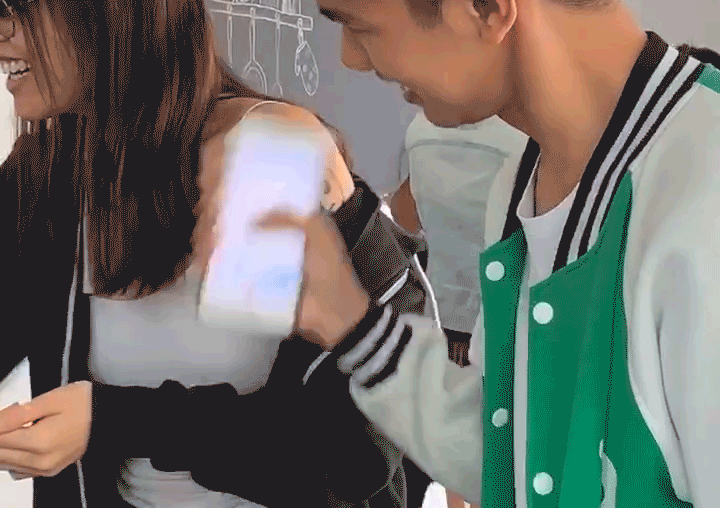


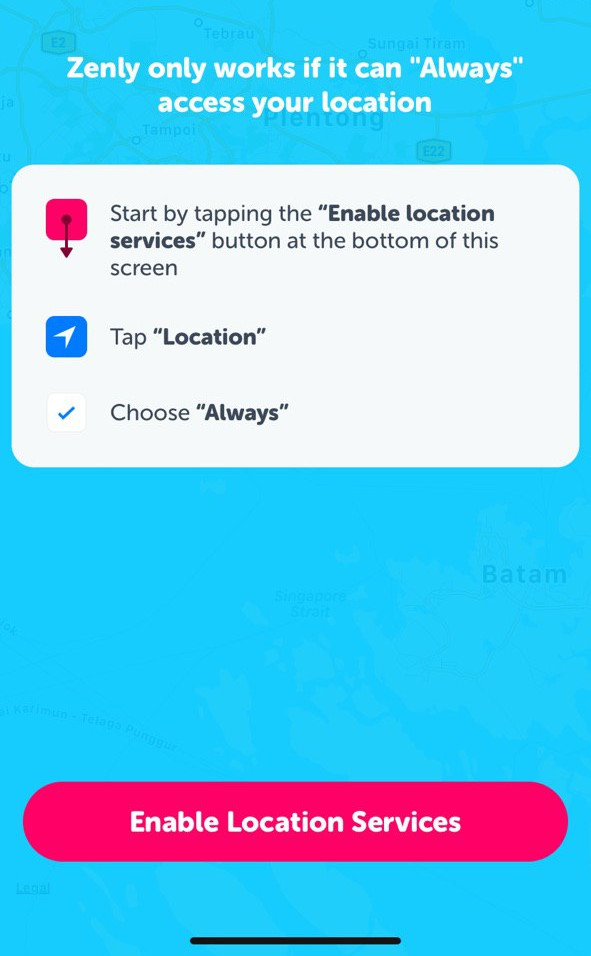
Younger Singaporeans May Not Know The Danger
Many of us are aware of the potential danger of revealing information that is so private and personal as our physical location, but the group this app appeals the most to may not be as shrewd when it comes to protecting their personal data. Currently, Zenly seems to be especially popular amongst Singaporean teenagers, with at least two colleagues telling us how their 15 and 16-year-old siblings are on it, and so are a lot of their peers.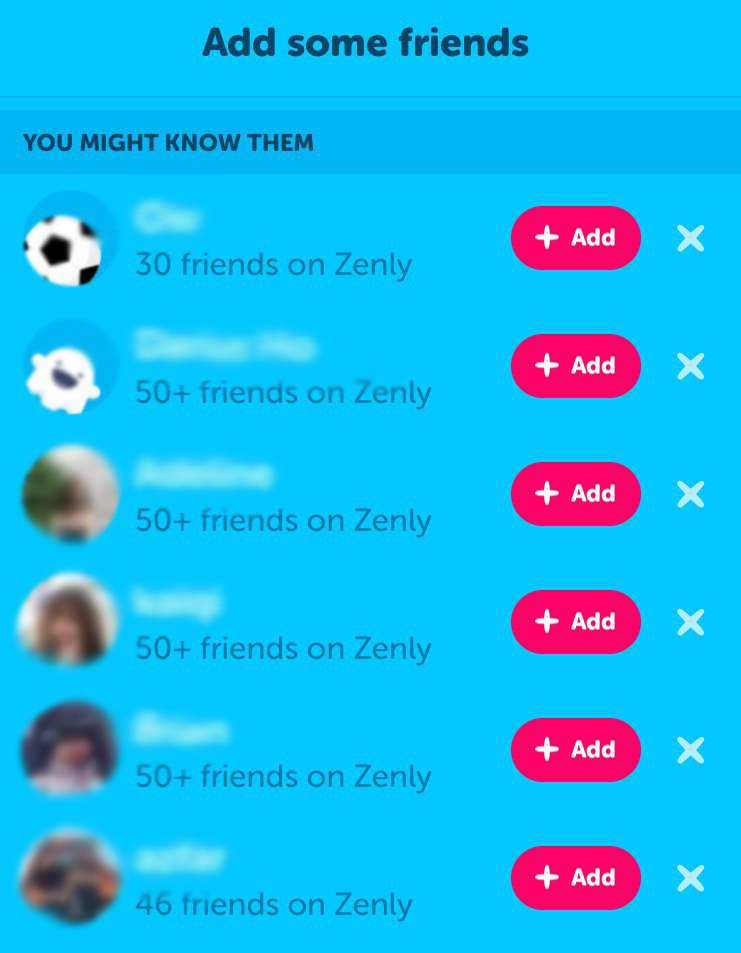
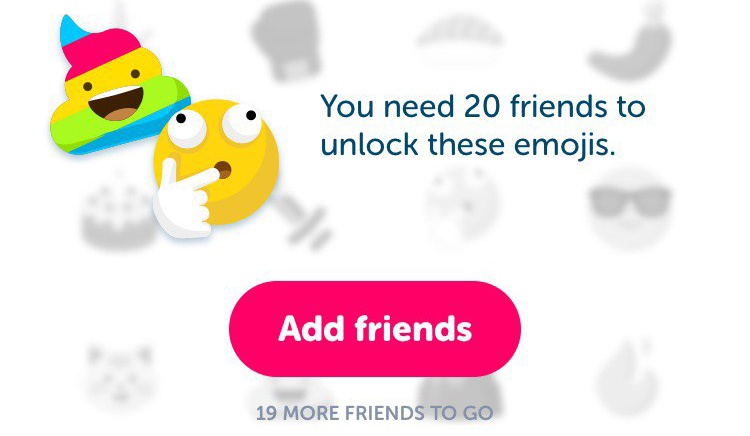
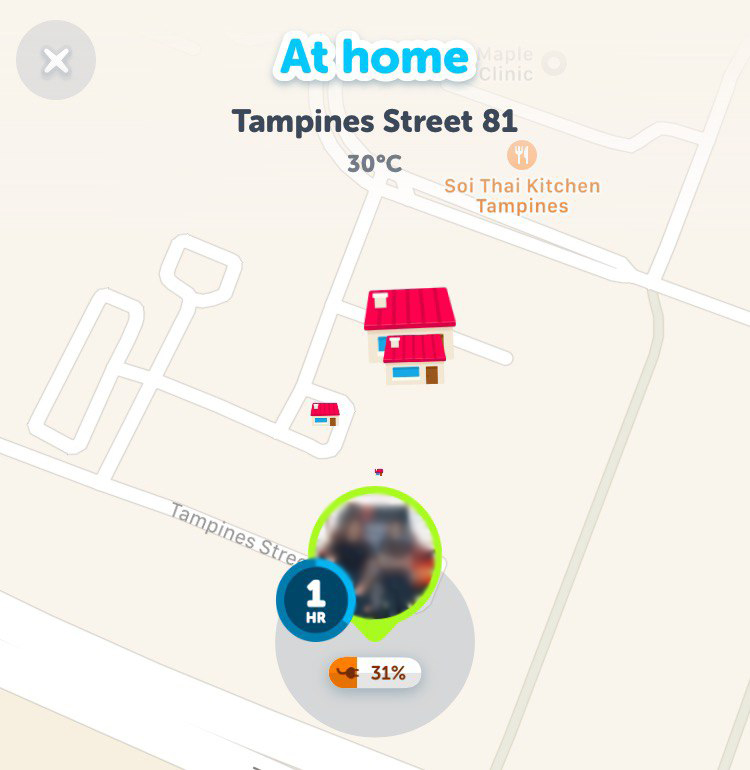
Fun To 'Stalk' Friends, But Still Very Creepy
Most of us know the amount of data social networking sites like Facebook and Instagram have been collecting from us, but it’s important for us to remember that Zenly is a whole new ball game. Our privacy and safety is at stake here, but a lot of the users who are hooked on the app may not realise the severity of it. Even within our social circles, there are young Singaporean users out there who are accepting friend requests from strangers, oblivious to the kind of dangers they have opened themselves up to. Anyone who is your friend on the app can view your whole life schedule, your usual hangout place, where you stay, where you work, and also where you study. They will know if you’re out clubbing on a Wednesday night, and when you are on the way home at 3am. We can only imagine the kind of people who would start using this app to stalk or prey on the young, or even friends that they are unhealthily obsessed with. Knowing what our friends' are up to or where they are hanging out at is gratifying. Annoying them with 100 over poop face emojis is fun. It’s a seemingly harmless social networking app if used with caution, but for us, it is still scary to know that the data of our physical locations and daily habits are being fed to the app and saved in their data storage, somewhere out there.What with so many cases of major data leaks happening in recent years. Call it paranoia, but we, for sure, don’t want to head home after a late night only to have a strange stalker waiting for us at our void deck. Besides, we value the beauty of being able to say we are ‘on the way’ when we are damn late for work, to meet our friends, or for any other work or social obligations really. With that, we tapped on the Zenly app for the very last time, and clicked on the X to delete - not before we Googled and realised the importance of manually deleting our account (all our data) before deleting the app. This is not a sponsored post. But if you want to annoy your friends on Zenly, you are more than welcome to try it. Also read: What Goes On Behind Closed Doors? Uni Students Share The ‘Juicy’ Stuff That Happens In Hall.With Halloween around the corner and us being too chicken busy for HHN8, we invited Gideon Grim himself to visit us in office. Because what other way to get a taste of HHN8 within the safety confines of our office than to meet the one man from the annual scarefest whom Satan reviewed “The only man I fear”?
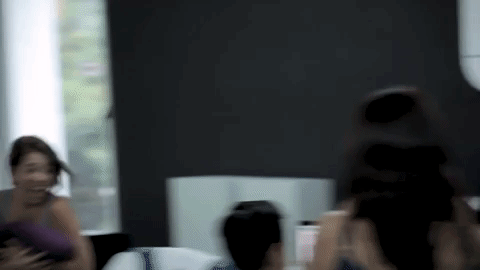
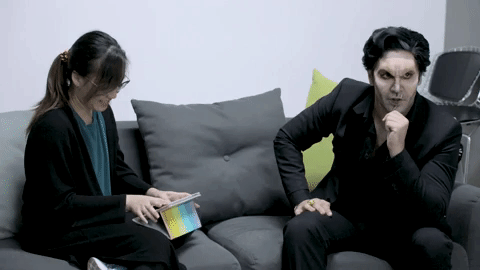
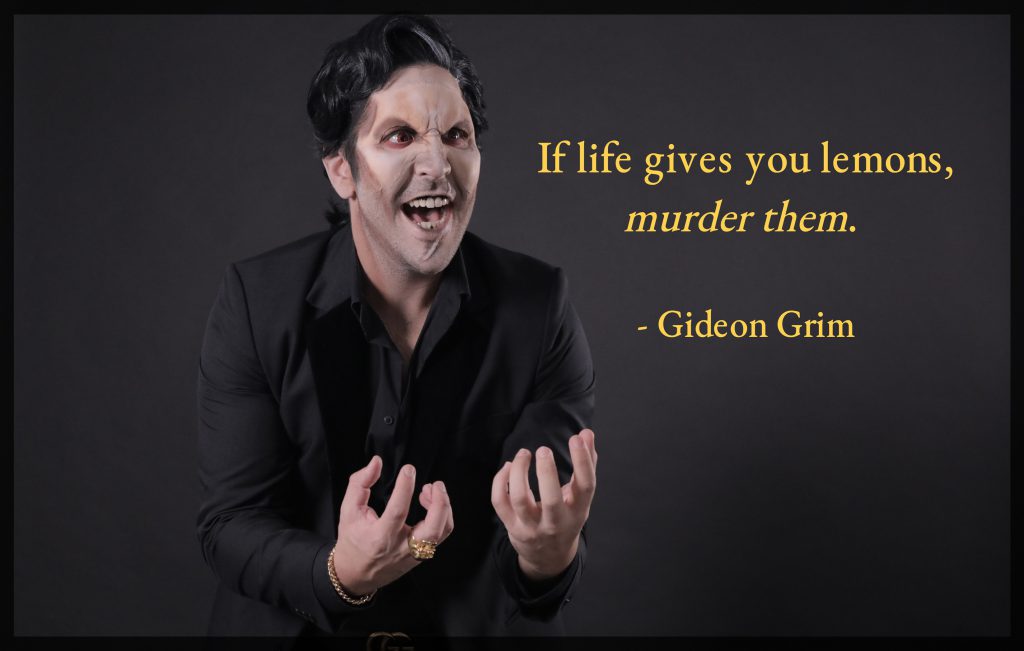

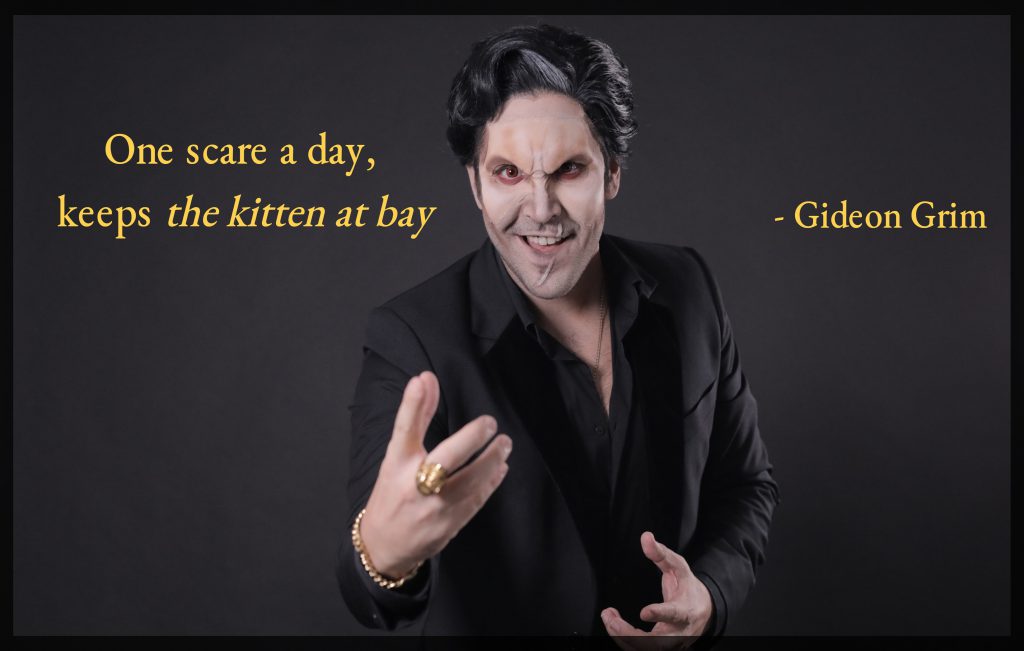
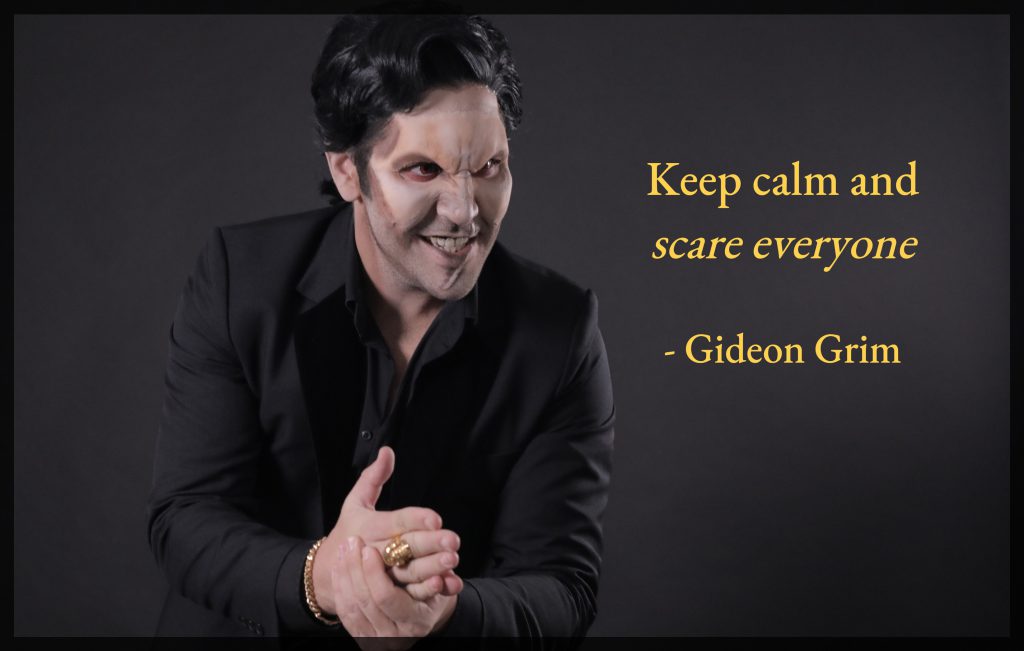 Such words of wisdom. And what a gift it was from Gideon to grace us with his presence amidst his busy schedule, which involves feeding his cat, Muffin the Murderer, watching the news to get his daily inspiration from scary things like global warming, and scaring people.
Such words of wisdom. And what a gift it was from Gideon to grace us with his presence amidst his busy schedule, which involves feeding his cat, Muffin the Murderer, watching the news to get his daily inspiration from scary things like global warming, and scaring people.

If do wish to frighten yourself and catch Gideon in action and the myriad of other scares HHN8 has in store for you, good luck, have fun, and brace yourself for “infinite fear”. Get your tickets here while you still can!
Also read, Infamous Ghost Stories In Singapore’s Polytechnics And Universities – As Told By Students.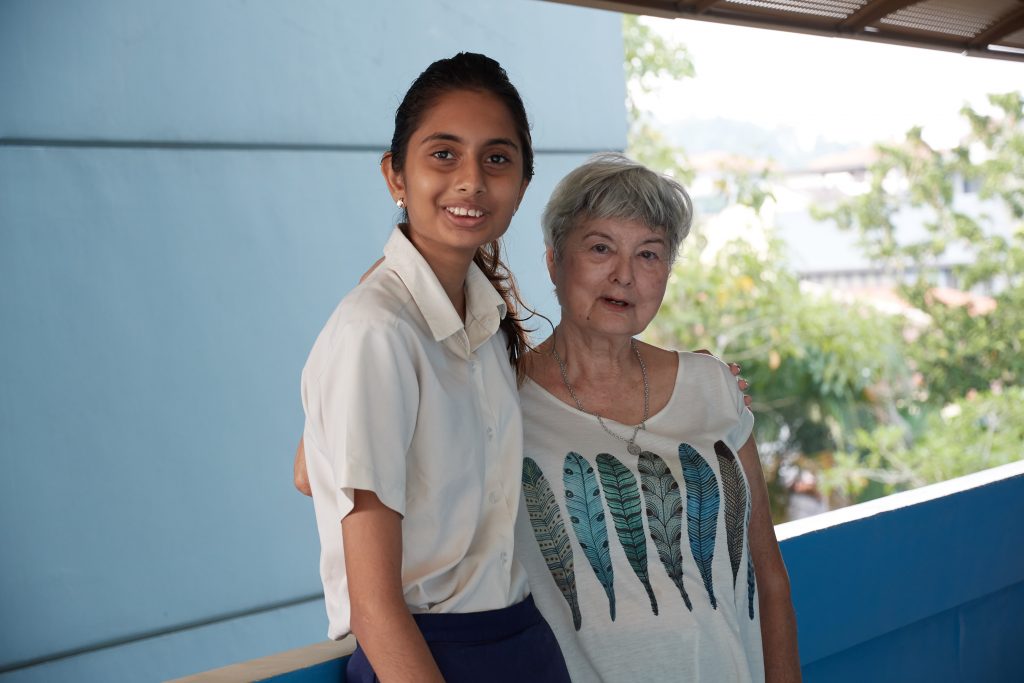
When Riddhi Met Louise
Riddhi and Louise were complete strangers when they met at a social experiment Channel NewsAsia ran. Titled “Back to School”, this four-part series followed Riddhi, Louise, and 4 other pairs of strangers as they spent 10 weeks together.
Watch Episode 1 of Channel NewsAsia's Back to School <a href="
The experiment gave invaluable insights into 10 average Singaporeans' lives and proved that despite the huge age gaps, friendship is possible.
While the episodes presented very interesting and endearing interactions between the Secondary school teenagers and their elderly partners, we wanted to find out more about what went on behind the scenes.
We spoke to Riddhi, Louise, and the production team. Here’s how they succeeded in making friends out of strangers who are generations apart.
Breaking The Barriers
Like most teens, Riddhi has no clear direction in life yet. She doesn’t fit in with peers in her school either, and prefers her world of fan fiction and indie music.
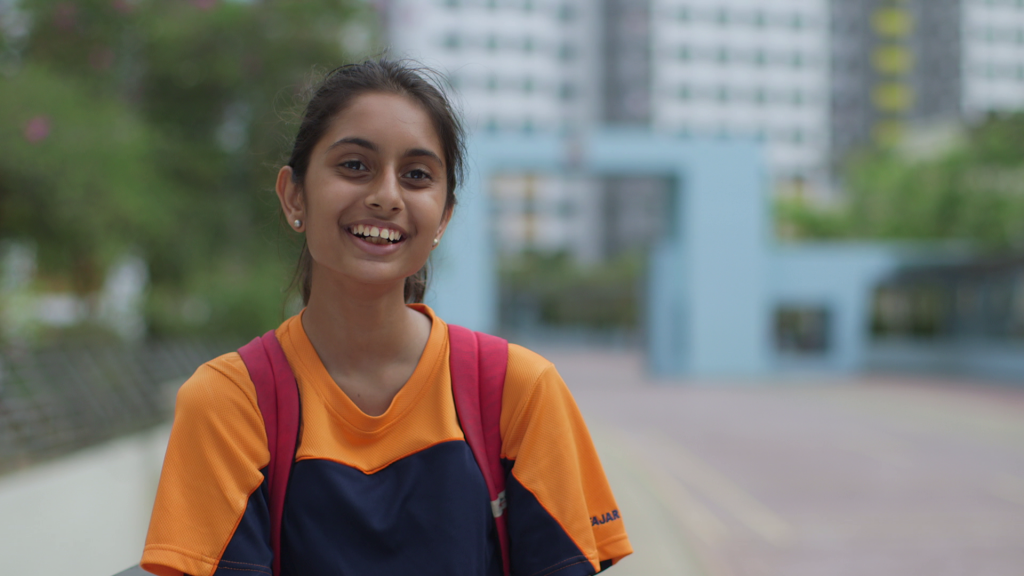

Becoming Friends
Despite the challenges in accommodating to each other’s needs, Riddhi and Louise grew to not only embrace, but help each other in their weaknesses.
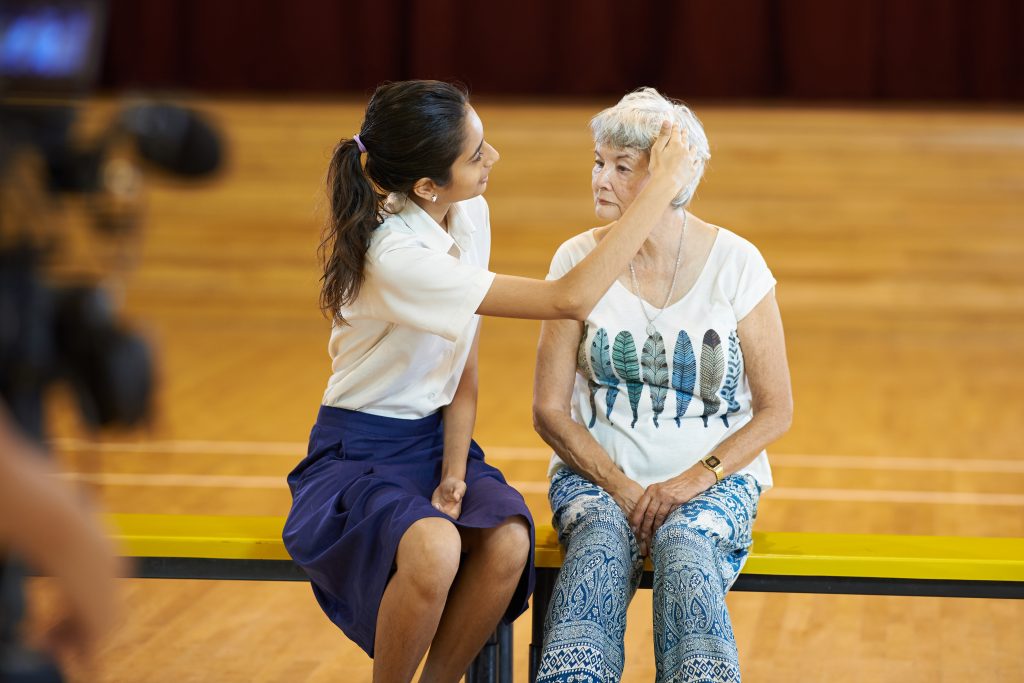
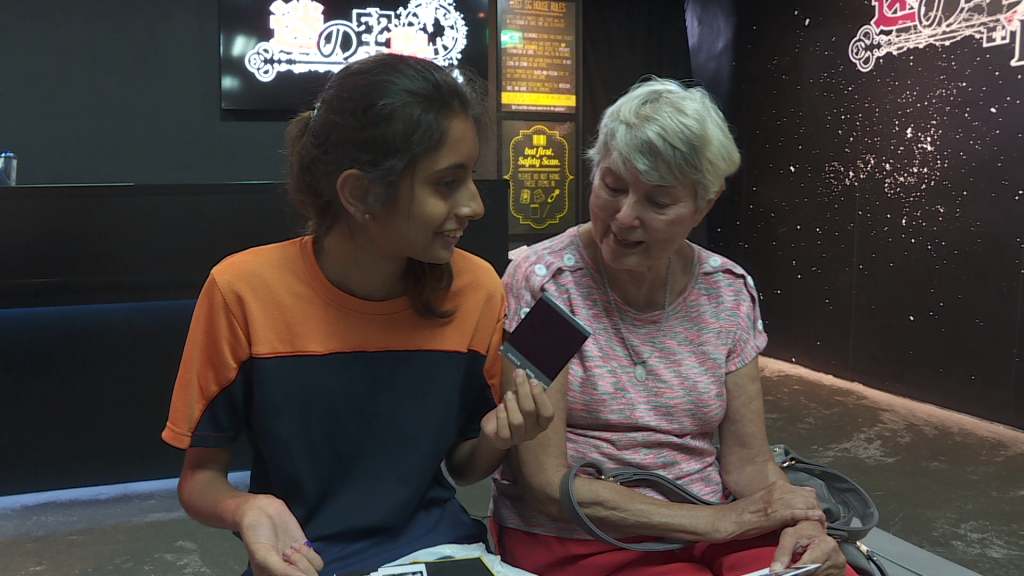
More Than Just Companionship
Having set out to test the success of intergenerational friendship researches done in US and Japan, the producers were “quite apprehensive about whether a simple friendship could make a difference, but the results showed a definite improvement.”
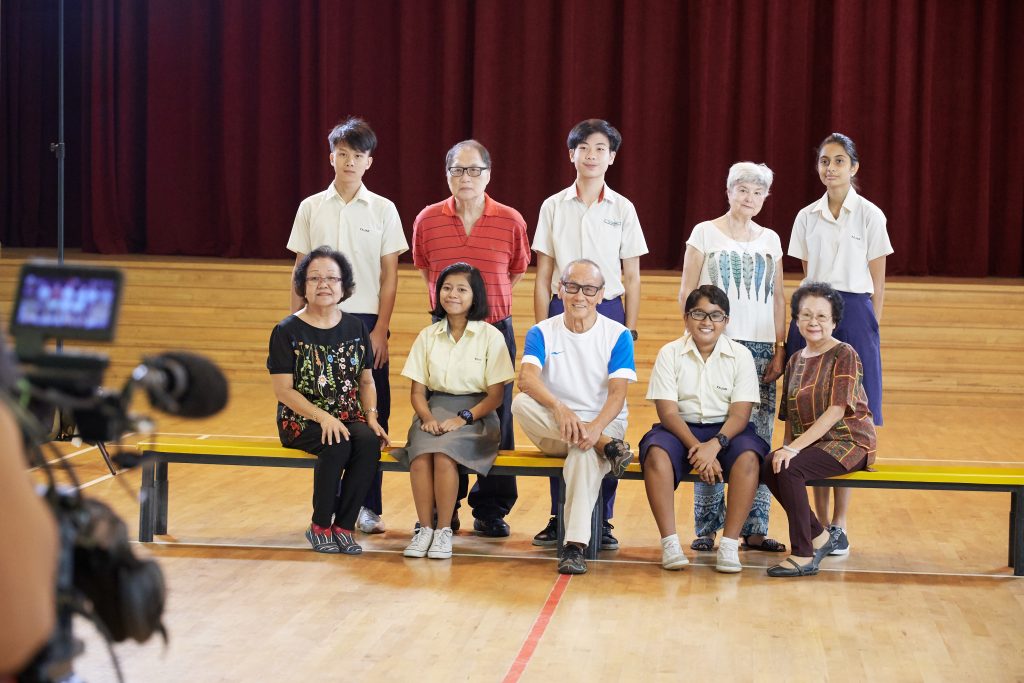
Best Friends Forever?
Now that the 10-week ‘project’ has ended, how do Riddhi and Louise see each other?
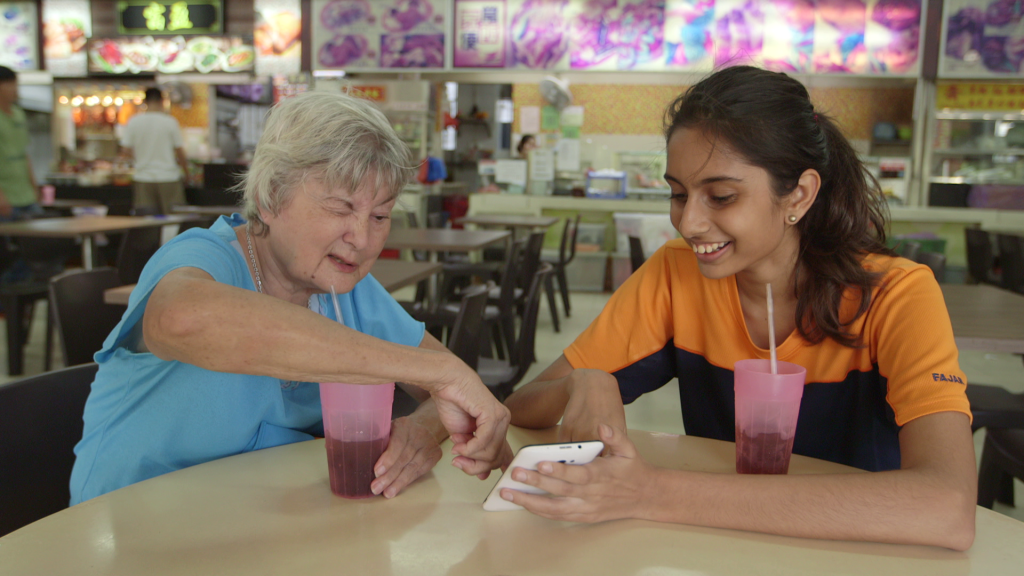 While Riddhi sees Louise as a good friend whom she can share problems with, Louise thinks of herself as Riddhi’s surrogate mother without the parental control, “I think Riddhi trusted me as an outsider, that’s why she shared her worries with me. It’s easier to share your problems to outsiders than to your own parents.”
What is the secret to their surprising bond?
“Listen, listen, and listen,” Louise emphasised, “seniors must take the first step to reach out, and don’t rush to impose or impart your knowledge until the young ones are ready to listen. Be patient.”
And for the young ones, “Don’t judge someone just because of their age,” Riddhi shared.
Watch the 10-week journey of Riddhi, Louise, and the other senior-teenager pairs on Channel NewsAsia’s Back to School <a href="
This story is written in collaboration with Channel NewsAsia.
Also read, These 14 Heartwarming Stories Show That A Mother’s Love Is Like No Other.
While Riddhi sees Louise as a good friend whom she can share problems with, Louise thinks of herself as Riddhi’s surrogate mother without the parental control, “I think Riddhi trusted me as an outsider, that’s why she shared her worries with me. It’s easier to share your problems to outsiders than to your own parents.”
What is the secret to their surprising bond?
“Listen, listen, and listen,” Louise emphasised, “seniors must take the first step to reach out, and don’t rush to impose or impart your knowledge until the young ones are ready to listen. Be patient.”
And for the young ones, “Don’t judge someone just because of their age,” Riddhi shared.
Watch the 10-week journey of Riddhi, Louise, and the other senior-teenager pairs on Channel NewsAsia’s Back to School <a href="
This story is written in collaboration with Channel NewsAsia.
Also read, These 14 Heartwarming Stories Show That A Mother’s Love Is Like No Other.
1. Always have a bottle of prickly heat/powder with you
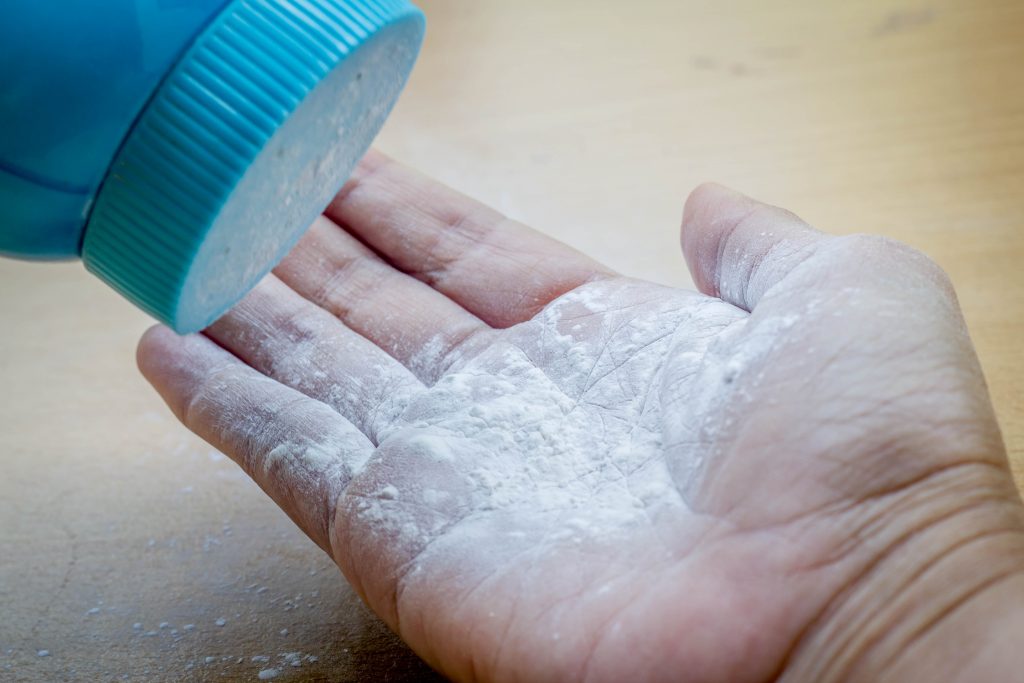
2. Have a bottle of fabric refresher in your room

3. Bring a portable charger in with you
4. You can never have too much black tape

5. Bring plenty of coins
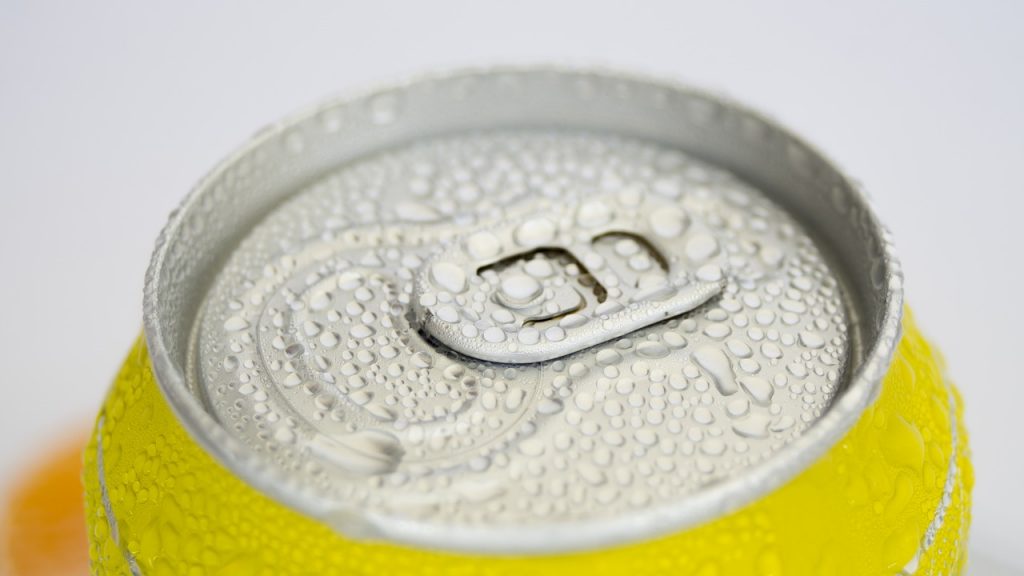
6. Bring more hangers—especially those with clips

7. Go in with a good attitude and an open mind

8. Love your mates because they will be your friends for a lifetime
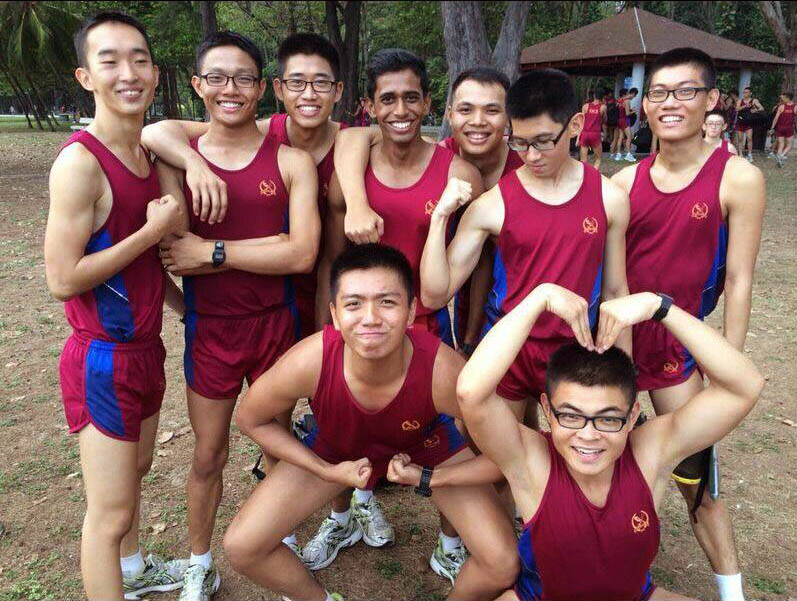
9. Don't spend all your money during your time in NS

POSB SAYS
This savings programme is the only initiative in Singapore that is designed specifically for NSFs. It consists of a POSB Save As You Earn (SAYE) savings account which allows you to earn 2% p.a. interest on your monthly savings, AND your choice of having the SAFRA DBS or HomeTeamNS-PAssion-POSB Debit Cards to enjoy 2% cash rebate on contactless MasterCard® transactions! Here’s how: Step 1: Choose a debiting POSB/DBS account to be linked to your POSB Save As You Earn (SAYE) Account Step 2: Open a POSB SAYE Account- Save any amount monthly (min. of S$50)
- Pick your preferred date for the savings to be credited into the POSB SAYE Account
<a href=" Out More About POSB Save As You Serve Here!
This post was brought to you by POSB.

